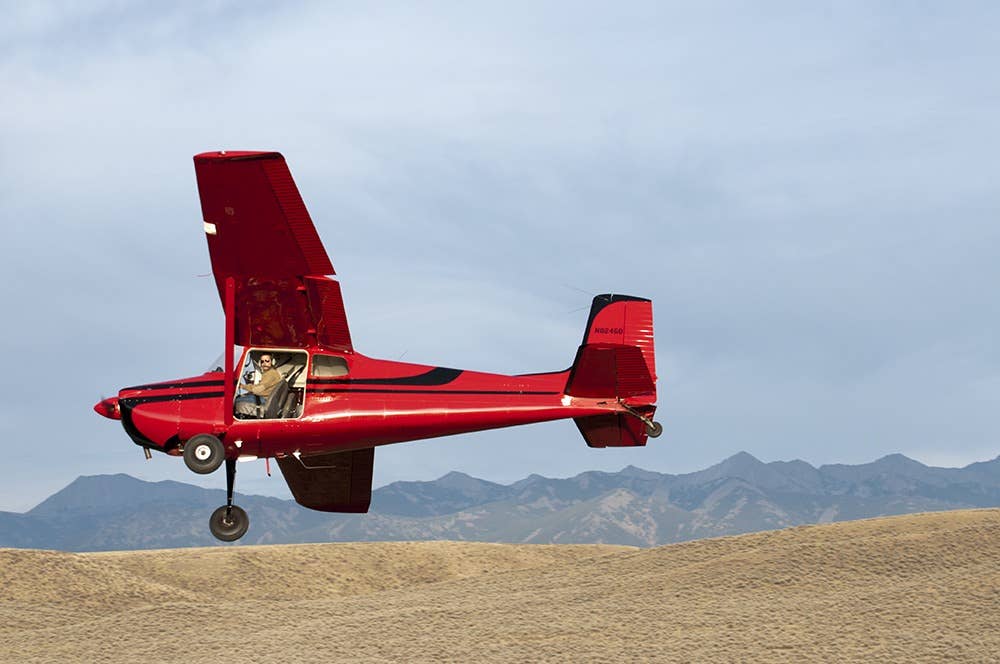
According to the annual report, LightHawk flew 219 missions, added 32 new volunteer pilots, and transported 17,488 animals. LightHawk
Resilience is a key trait for both pilots and non-profit organizations, and both were manifested by the LightHawk conservation organization during a second year of the pandemic. On Monday, LightHawk released its annual report noting the challenges and successes of the 2021 fiscal year as the group moved ahead with its mission to protect the environment.
Adapting to the Pandemic
Just as animals in the wild adapt to their environment, so did LightHawk as the pandemic hit home for the group. They lost 10 friends, leaders, and pilots, including board chair Brigadier General Lawrence “Bud” Sittig. Despite this, they moved ahead with their mission to protect the environment.
“We spent a lot of time on video calls,” said Jim Becker, LightHawk board of directors chair. “LightHawk moved to a totally distributed organization model with staff in nine different states. Despite these obstacles, LightHawk continued to prove that aviation can advance conservation in many ways. Our team developed new techniques for video monitoring and improving endangered species transport, just to mention a few. We also added new senior staff, pilots, and board members.”
LightHawk By the Numbers
According to the annual report, LightHawk flew 219 missions, added 32 new volunteer pilots, and transported 17,488 animals.
Flights along the Colorado River and images of the critically low water levels at Lake Mead were gathered by LightHawk pilots. The lake provides water for much of the population in the Western U.S. Some of the photographs gathered on these flights were jarring enough to inspire local media to write stories reflecting the impact of the drought on local communities.
What is LightHawk?
The all-volunteer organization is based in Fort Collins, Colorado, and operates across the U.S., Mexico, and Canada. Their mission is conservation through the observation of rivers, estuaries, and coastlines to identify threats, and ensure species survival. The organization is a 501 (c)(3) organization and 100 percent funded through donation.
Endangered species relocation was also a key mission for LightHawk pilots. Air transport is often less stressful to the animals than ground transport, leading to higher survival rate.
At one point there were more white abalone in the sky than in the ocean as 16,402 of the endangered shellfish were transported to Southern California for release in restored kelp forests and rocky reefs where they will contribute to the recovery of their species.
The transport was completed in five flights done in partnership with The Bay Foundation and University of California Davis Bodega Marine Lab.
“If it wasn’t for LightHawk, we would have had to drive the animals, which can result in higher mortality due to the long duration of the drive,” stated Kathy Swiney, of the NOAA SW Fisheries Science Center.
Because field biologists’ activities were significantly limited because of COVID-19 restrictions, LightHawk aircraft were also used to locate endangered species of birds, including the California condor. The LightHawk pilots used aerial telemetry to determine the location of the birds. The aircraft were also used to transport juvenile birds from Idaho to the wilderness of California for re-population.
In one instance a LightHawk aircraft was used to transport a condor with a broken leg to a veterinary specialist several hundred miles away for emergency surgery.
Birds and shellfish were not the only animals LightHawk transported, as several captive born Mexican red wolf pups were flown for placement into wild dens. Mexican wolves had been considered extinct in the wild until reintroduction in 1998 in Arizona and New Mexico. The release of the pups into wild dens is called cross-fostering, and is done to increase the population and maintain genetic diversity of the recovering species.
“LightHawk flights made impactful ‘just in time’ differences in endangered species transports, filling a critical gap created when other options were not available,” states LightHawk CEO Michele Rutledge. “We are fiscally sound and entering into a thoughtful strategic planning process to propel our next 40-year-plus years to sustainability.”

Sign-up for newsletters & special offers!
Get the latest FLYING stories & special offers delivered directly to your inbox






